Some new moms might easily be misled by the word “essential” because it basically means that it’s something you must have.
When you are excitedly expecting your first or subsequent babies, part of the planning that has to happen is getting everything that baby must have – and the list is endless.
So, should essential oils be on this list? Are they something that an infant needs? Would your nursery be incomplete without an essential oil diffuser?
Will you be a below-average mom if you don’t have a stock of essential oils to calm your fussy baby or apply it to whichever part of its tiny body that seems to be causing a flood of tears?
Of course, there’ll be a stream of relatives and friends who swear by this oil for this and that oil for that, but can their advice be trusted?
Has enough research been done on essential oils by you, them, or specialists in the field of aromatherapy to justify rushing out and buying supplies of all the oils known to man (and there are many of them)?
First of all, you should calm down and trust your gut instinct.
You’ve taken such good care of that baby during the nine months of pregnancy, when you shared your whole being with it.
I am sure you watched what you ate or drank, and did everything you could to keep yourself and your little one safe and healthy.
So, now that your baby is in your arms, you merely need to apply the same logic when it comes to buying and using any products that are baby-related – from choosing the best diapers, clothing, furniture, etc. down to deciding whether or not to use essential oils on your baby.
Knowledge and common sense are your new best friends!
Whether you’re a recycled hippie like me, or a modern age mom who wants their baby to be happy, healthy, and wholesome, chances are you’ve been wondering if you should be using essential oils on your baby.
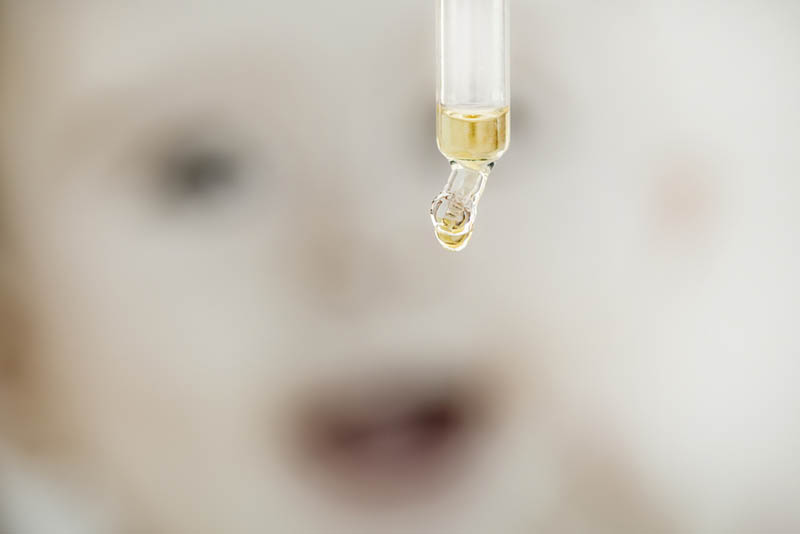
Just the words “essential oils” conjure up the idea of your baby sleeping peacefully surrounded by rose petals and lavender, or a curly-haired child running barefoot on the grass.
It seems that finding peace and wellbeing are becoming more important in our stressful world, and people are now looking to practices that were tried and tested by our ancestors to try to create a little bit of calm in their own lives.
There’s probably no greater time of stress in a woman’s life than when she’s just brought a baby into the world and her natural instincts to do the best for that child are at their strongest.
It’s interesting to note that essential oils in aromatherapy have been used since 3,000 B.C. as part of natural health care.
So, it’s easy to assume that if it’s natural, it must be safe.
This is, in fact, far from the truth. I cannot stress strongly enough that using essential oils – especially with babies and young children – carries huge risks and should never be used without being certain about what you’re doing.
Some scientific research has been conducted in order to establish the specific health benefits of different herbs and plants, and which parts of the human body and mind are most likely to benefit from their use.
It’s important to note that not all research has been done according to strict scientific regulations, so using essential oils with babies does carry some risk.
From skin irritations being treated with a topical application of a poultice to the use of diffusers to fill the air with mood-enhancing fragrances, there can hardly be a living soul who has not had some introduction to essential oils.
In Asia, for instance, essential oil blends are used in food production because they have insecticidal and antiparasitic properties.
In the Western world, we tend to use them more in treatments and generally for the “feel good” factor that comes from them.
So, if essential oils have all these known benefits, surely our babies should be smothered in them from birth!?
There is one crucial problem with that suggestion: It’s not safe to use all essential oils on baby’s skin – and especially not on the skin of newborns.
It can also be dangerous for babies to take in essential oils by mouth, particularly if you are breastfeeding.
I may sound a little negative by talking about the dangers of using essential oils on babies and young children, but the strength of these oils, before diluting, could cause more problems than they solve and no loving parent would want to be responsible for causing any kind of harm to their baby.
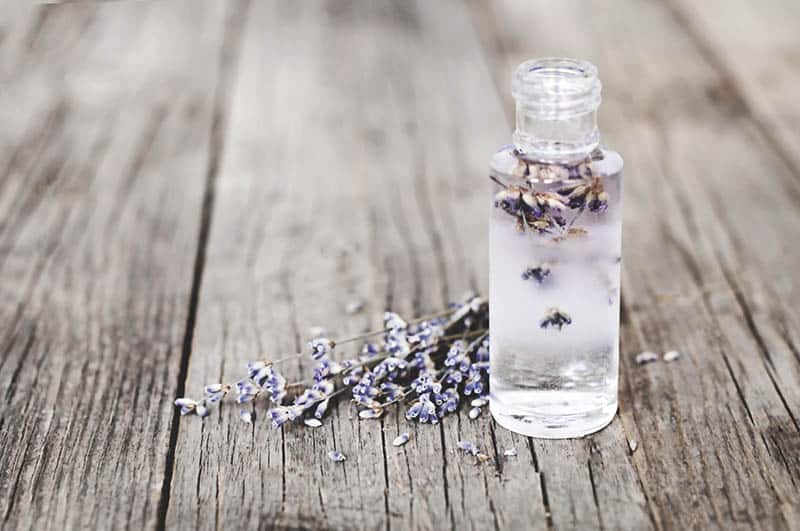
Qualified aromatherapists have the necessary knowledge about which are safe essential oils for babies, as well as how to carry out safety checks, such as a patch test, prior to using essential oils on a baby.
Before you consider using essential oils on any of your children, you should find out all you can about how to use them safely from a specialist in these oils.
Many desperate moms rely on word-of-mouth recommendations or old wives tales without checking out whether that particular oil is right for their child.
One such reputable aromatherapist is Robert Tisserand. He is an expert on aromatherapy and has excellent knowledge of the latest research in this field.
He is also an author and many of his informative books can be bought on Amazon.
He has developed a range of essential oils that you can buy for your baby and young children that can be used with confidence.
Tisserand states clearly that there are risks involved with using essential oils for babies and that when they are used without the necessary caution, or even ignorance, there can be disastrous results.
He believes that if users are well-informed and follow safety guidlines, then they will be able to enjoy the benefits.
What do experts say about using essential oils on babies and young children?
During a Q&A session, Tisserand was asked whether he thought essential oils should be used on babies or young children, to which he replied:
“There is no need to use essential oils with very young children or new-born’s if there is nothing wrong with them.”
According to The American Association of Naturopathic Physicians, it is NOT recommended to use essential oils on babies younger than 3 months.
In my opinion, that’s a good place to start.
So, if your baby is in need of some TLC, which essential oils should you use?
Used only on babies over 3 months old, essential oils can help with ailments such as anxiety, sleeplessness, breathing problems and even colic.
Essential oils have specific characteristics and cannot all just be used in the same way. Some are safe for use on the skin, while others definitely aren’t.
Some can be taken orally and others cannot.
I think it is time that we had a look at specific essential oils and improve our knowledge of the names and uses of them.
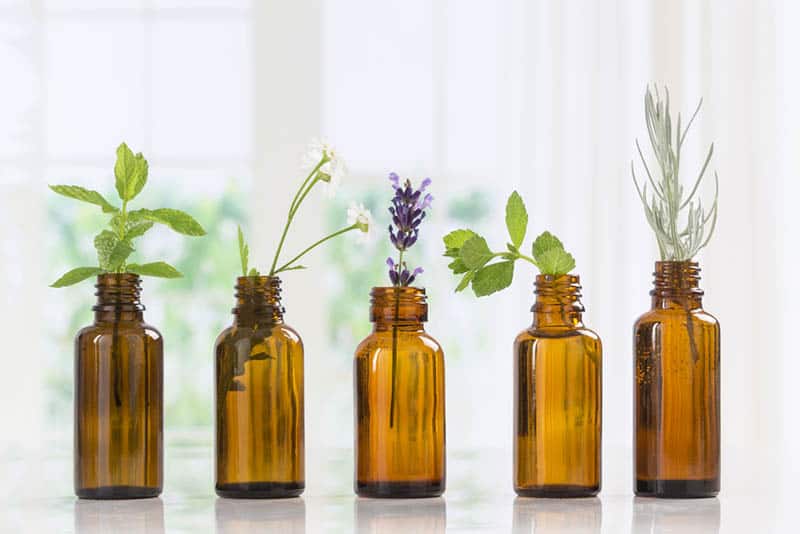
Safe Essential Oils:
1. Chamomile
- Sweet Herbaceous - certified by Ecocert, our organic roman chamomile oil radiates herby sweet scent like the chamomile flowers. With hints of apple-like notes, this camomile oil essential oil relieves stress, improve sleep and soothe skin irritations.
- Diffuse or Topical - diffuse roman chamomile essential oil organic for stress relief that lulles you into better sleep at night. Blend organic chamomile essential oils with carrier oils to soothe dry and sensitive skin.
- Relieve Stress and Improve Sleep - chamomille oil ease away mental tension and negative thoughts with its calming aroma, bestowing sweet dreams upon you for better days tomorrow. Be free from worries and ace your tasks with essential oils chamomile.
Prices pulled from the Amazon Product Advertising API on:
Product prices and availability are accurate as of the date/time indicated and are subject to change. Any price and availability information displayed on [relevant Amazon Site(s), as applicable] at the time of purchase will apply to the purchase of this product.
Chamomile has a soothing effect and can be used to lull a restless baby to sleep, much like the tea made out of the same herb, though much easier for the baby to process than giving them a hot drink.
In my case I utilized Chamomile the most, both for me and my first baby, it helped reduce the amount of times she’d get upset and gave me more room to breathe.
It helps loosen up any stressed or cramped up muscles, providing an overall effect of calmness which allows the baby to have more pleasant dreams during sleepytime.
I suggest using it as a massage oil after dilution as that seemed to provide the best effect.
Alternatively, a few drops of diluted Chamomile oil in warm bath water will calm the baby down before a feed.
When mixed with Lavender oil, it could ease the pain of colic.
2. Lemon
- With Lemon, everyday can be the first day of spring. Its crisp, citrus-fresh aroma brings to mind sunshine and your favorite household cleaning products — just without the chemicals.
- As the leader in the essential oils industry, we value safety, quality and education in offering only the best aromatherapy products. For this reason, we test every batch of essential oils and provide GC/MS reports to our customers to ensure each oil’s therapeutic value and purity.
- Each of our products is expertly formulated and hand-poured, including over 200 essential oils and synergy blends. We also offer a wide array of natural home and body products that are kind to the environment. Have a question about essential oils? Our certified aromatherapists are happy to lend a hand in your EO journey!
Prices pulled from the Amazon Product Advertising API on:
Product prices and availability are accurate as of the date/time indicated and are subject to change. Any price and availability information displayed on [relevant Amazon Site(s), as applicable] at the time of purchase will apply to the purchase of this product.
Distilled lemon is a gentler citrus oil for babies and is recommended as a pep-up after a sleep.
While not as useful as chamomile oil, distilled lemon oil can give the baby room an uplifting and refreshing aroma, letting your baby wake up to a wonderfully natural fragrance.
As for skin application, I would not suggest it before you do a test of a very small drop to see if the intensity of the citrus is too much for your baby’s skin.
Plus its purpose is purely for the fragrance, not for direct medicinal applications.
That said, your baby (and you) will appreciate having a more pleasant and natural smell fill the room.
3. Dill
- Botanical Name: Anethum graveolens
- Dill has a fresh, warm and herbaceous aroma.
- This product is 100% pure, therapeutic grade essential oil. Packaged in a dark amber glass bottle (for product quality) with security cap. Includes a European dropper that allows 1 drop at a time to come out of the bottle (prevents waste).
- Uses: Aromatherapy, Massage, Vaporizer, Diffusion, Oil Burner, Inhalation, Compress, Perfume, Essential Oil Blends, Spa, Health and Wellness, Bath, Home Care, Scent Your Own Products.
Prices pulled from the Amazon Product Advertising API on:
Product prices and availability are accurate as of the date/time indicated and are subject to change. Any price and availability information displayed on [relevant Amazon Site(s), as applicable] at the time of purchase will apply to the purchase of this product.
Dill oil can be used to soothe indigestion, settle the tummy, and help your baby to relax. In a very diluted form, it could be gently massaged onto the baby’s tummy in circular motions.
It carries similar properties to that of Chamomile, so it comes down to personal preference in which one you prefer.
If you’re looking for it on store shelves, you might have better luck looking for its botanical name, Anethum graveolens.
The oil gives this lovely, earthy aroma of freshly crushed grass and herbs for those of you who prefer the more natural feel of a home.
Personally, I’m more of a chamomile person as I’m much more accustomed to it, but one of the hidden benefits of dill is that utilizing diluted dill oil can aid in preventing breast milk deficiency.
A quality that’s sure to become useful in newborn care that’ll improve their quality of life.
4. Eucalyptus
- HERBACEOUS AND WOODSY - Eucalyptus strong and aromatic scent makes it a top pick for aromatherapy. This organic eucalyptus oil can be used in diffusers, humidifiers, vaporizers, saunas and steam rooms
- REFRESHING AND INVIGORATING - Creates a relaxing and soothing aromatherapy experience to support feelings of relief from stress, mental exhaustion, sluggishness and fatigue
- NATURALLY THERAPEUTIC - can be used to help support aching muscles and various skin concerns. Always dilute before topical use.
Prices pulled from the Amazon Product Advertising API on:
Product prices and availability are accurate as of the date/time indicated and are subject to change. Any price and availability information displayed on [relevant Amazon Site(s), as applicable] at the time of purchase will apply to the purchase of this product.
Eucalyptus radiata is only safe for babies and children when indicated as such, so be careful to check the label.
When diluted, this oil can help soothe a baby with a common cold because it is useful for unclogging stuffy noses and aiding breathing. Use with caution.
As safe as these 7 are, they are still potentially hazardous if mishandled, though their benefits shouldn’t be overlooked because of it.
Eve Hansen’s is one such product, though you should still take care of proper storage and use.
Eucalyptus is best used in diffusers to spread the strong smell and help cleanse your nasal pathways and as an additive to a bath to help relieve any sores your baby might have.
5. Lavender
- THE BEST SMELLING & EFFECTIVE LAVENDER OIL - 100% natural and cruelty-free. Treat yourself to a large 4 oz bottle of quality lavender oil that’ll help refresh and cleanse the surrounding air with its soothing scent. If you don’t feel satisfied, contact us for a full refund.
- MULTIPURPOSE DIY - Best for aromatherapy, massage, skincare, diffusers, homemade blends, bath bombs, laundry, repellent sprays, and use in homes, offices, and gardens.
- AROMATHERAPY - It is ideal for relaxation, quality sleep, headaches, clear breathing, reducing anxiety, and household freshness. Enjoy our Radha Beauty Lavender Oil. Bring relaxation, wellness, and a sense of happiness to your day!
Prices pulled from the Amazon Product Advertising API on:
Product prices and availability are accurate as of the date/time indicated and are subject to change. Any price and availability information displayed on [relevant Amazon Site(s), as applicable] at the time of purchase will apply to the purchase of this product.
This oil is known for its calming qualities and can be used to quieten down a cranky baby.
Radha Beauty, despite being primarily focused on your own care, carries the added benefit of making their oils safe to use on your little ones (in diluted form, naturally).
It has a variety of uses, from the pleasant, flowery smell when used in a diffuser to help calm the baby down when needed to treating many forms of skin irritation, from bug bites to various rashes.
One might say the Lavender oil does it all, but it all depends on how your baby takes to it.
Thankfully, many of the safe oils share beneficial effects between them which makes it easier to adjust.
There is evidence that Lavender oil can ease pain in babies and helps to lower heart rate too, though the latter isn’t as important as the former.
6. Mandarin
- NATURAL SERENITY IN A HANDY BOTTLE: KidSafe Calming the Child essential oil is a blend of Mandarin Orange, Tangerine, Lavender, Roman Chamomile. It’s a safe way to relax your child by calming the mind, bringing on a sense of tranquility. Great at bedtime to get a peaceful night’s sleep.
- 100% PURE OIL CRAFTED BY EXPERTS: Our Aromatherapists use only 100% Pure, undiluted essential oils. Put a few drops of this sweet smelling synergy blend in an aromatherapy diffuser or dilute it in your favorite Plant Therapy Carrier Oil and massage into your child’s skin on their neck or chest.
Prices pulled from the Amazon Product Advertising API on:
Product prices and availability are accurate as of the date/time indicated and are subject to change. Any price and availability information displayed on [relevant Amazon Site(s), as applicable] at the time of purchase will apply to the purchase of this product.
Mandarin is another calming oil, and because it’s not phototoxic, it doesn’t usually cause skin irritation.
This property makes it better for infants than other citrus oils.
It’s ideal for using in a diffuser, especially for babies that do not care for the smell of Lavender.
While Plant Therapy Mandarin oil still blends lavender and chamomile, it does so to enhance the calming effect of the same oils while adding a note of freshness to the scent.
This way you don’t get that drowsy calmness, but a more natural one. It’s best applied through massages or through a diffuser for the best effect.
Though don’t forget to dilute it before doing so.
It may be kid-safe, but only when the instructions are followed through correctly.
7. Tea Tree Oil
- THERAPEUTIC TEA TREE OIL high potency essential oil is a gentle purified detoxifying antifungal antibacterial antiseptic & antimicrobial healing solution for a variety of hair skin & nail conditions.
- HEALING ESSENTIAL OIL relieve acne psoriasis anti dandruff prevent lice hair loss sore muscles nail fungus. Heals cuts scrapes bruises piercings & burns as it boosts immune system & promotes wellness.
- PERFECT FOR DIY undiluted tea tree oil to make your own shampoo conditioner body wash deodorant moisturizer soap aromatherapy massage oil and even a chemical free all-purpose cleaner for home.
Prices pulled from the Amazon Product Advertising API on:
Product prices and availability are accurate as of the date/time indicated and are subject to change. Any price and availability information displayed on [relevant Amazon Site(s), as applicable] at the time of purchase will apply to the purchase of this product.
(also known as Melaleuca oil)
Tea tree oil has disinfectant, antiseptic and antifungal properties, something Maple Holistics greatly embraces and promotes in it’s variation, making it rather useful in maintaining proper hygiene for kids and parents alike.
It can help to ease nappy rash and other minor infections with great success.
That said, it must be used with caution.
Because it is a very strong oil, Tea Tree should not be used on babies under 6 months old, and for older babies, only after a patch test.
Never apply this essential oil to broken skin due to how potent it is in essence and try sticking to alternatives despite being safe until the time is right.
How to dilute essential oils for babies:
Always remember to use a carrier oil (coconut is best for babies) when using essential oils on the skin.
For babies 3 months and older, it is recommended to use a dilution ratio of 0.5% essential oil to carrier oil – that’s 1 drop of essential oil to every 2 teaspoons of carrier oil.
Do not assume that because your little one has responded well to one essential oil, that he or she won’t have an allergic reaction to a different one.
Always do a patch test on the baby’s skin (usually on the foot or arm) before any new oil is introduced.
Common essential oils NOT SAFE for babies:
Undiluted or diluted, there could be fatal consequences if these essential oils are taken orally or applied to the sensitive skin of infants and young children.
- Rosemary
- Fennel
- Marjoram
- Basil
- Sandalwood
- Neroli
- Grapefruit
- Cedarwood
- Peppermint oil
- Wintergreen
- Frankincense
- Lemongrass
- Oregano
A guide on essential oil safety:
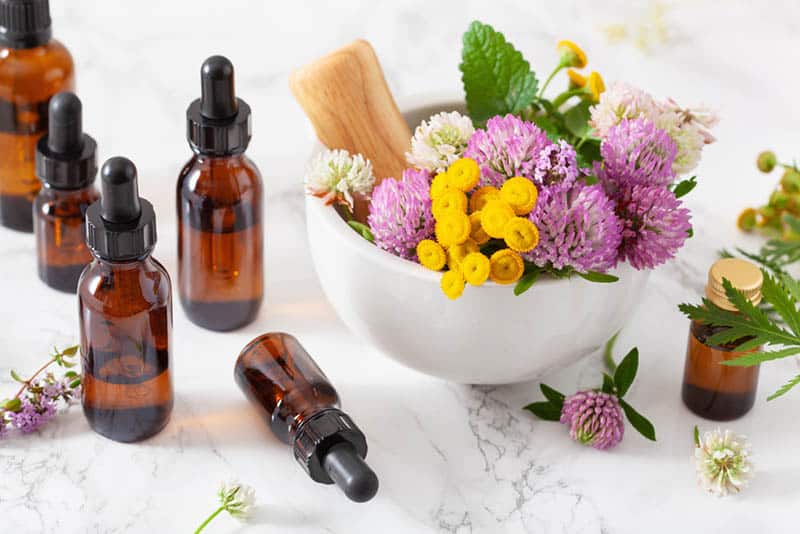
They have to be diluted in carrier oils, such as coconut oil or sunflower oil, and in very specific proportions.
Olive oil is not to be used as a carrier oil for babies as it can damage the skin. Because babies have very sensitive skin, they need oils to be diluted even more than usual.
It’s crucial to know how to use each essential oil. Some are not safe to be used on the skin, but are safe in food.
Others should only be used in a diffuser. Always read the labels.
It’s a good idea to talk to your doctor about any essential oils you’re thinking to use because they may conflict with any other medications your baby is taking.
They will also know if there are potential health risks that run in the family.
These oils should be treated with the same caution that you would exercise for any other medicine.
Keep them locked up and completely out of reach of babies and young children.
You should not keep them for longer than 3 years as they change over time and might not be as effective.
How to use a diffuser safely in your baby’s room:
- TWO-IN-ONE: It can be used as both humidifier and scented diffuser for essential oils. As humidifier, it can refresh environment for study room, bedroom, living room etc.; as fragrance diffuser, it can eliminate various peculiar smells(bathroom/kitchen/pet room/hotel) after you add 2-3 drops of essential oil into it
- SAFETY & SILENCE: BPA free,no harm to kids, parents and pregnant women; with advanced technology adopted, it enables safe and fine mist with only whispering sound(<35dB) and will auto shut off when water runs out, no disturbance to profound sleepers
Prices pulled from the Amazon Product Advertising API on:
Product prices and availability are accurate as of the date/time indicated and are subject to change. Any price and availability information displayed on [relevant Amazon Site(s), as applicable] at the time of purchase will apply to the purchase of this product.
There is a wide range of diffusers available that are specially made for nurseries.
They come in all sorts of designs and some may even come with fancy extra gadgets, such as softly coloured lights for an added calming effect.
I have personally used Ominilight’s Large Ultrasonic Diffuser because of the wood-mimicking exterior that made it fit in well with my forest-themed, child-friendly room.
That and the orange and yellow LED lights made it feel like a home for fireflies and something wonderful to fall asleep to.
Those were the aesthetic benefits of the diffuser anyway, but it has plenty of added benefit in being child friendly as it’s both quiet and it shuts itself off after all the water runs out.
All of the added adjustability in timers and the two varying high and low-mist modes made it extra pleasant for the whole family upon use.
But again, despite all of the listed benefits, these are still essential oils we’re talking about.
It’s very important to read the manufacturer’s instructions before using any diffuser in your baby’s room and check which oils are safe to use in these types of diffusers.
The oils must be correctly diluted or else they could cause breathing problems or even trigger an asthma attack in babies who are at risk.
Remember to keep the nursery ventilated when diffusing essential oils anywhere near a baby.
The amount of time that a diffuser is used in a nursery is also an important factor.
Do not leave it burning constantly and it should never be in close vicinity of the cot or bed.
About 30 minutes at a time should be all that’s needed for your baby to benefit from the soothing effects of breathing in the oil.
The safe use of essential oils in baby massage:
You don’t have to use essential oils when giving your baby a massage, but it can make the gentle strokes even more soothing for both you and baby.
The added benefits of using specific oils for problem areas could also have health benefits for your baby.
People in India have been using massage on babies since ancient times and claims have been made that the calming effects of the oils used in baby massage can improve digestion, circulation, and mood.
I’m sure there are times when you and your little one could do with an improvement in all of the above!
When you massage baby’s skin, remember that you’re just smoothing it over the skin and not trying to rub the essential oil in.
Massage can be done generally all over the baby’s body, at pressure points on the feet that link with specific organs (if you have this specialised knowledge), or near the problem areas.
For example, massaging around the neck and jaw when your baby is teething, or using circular motions in the direction of the digestive system to soothe tummy cramps or colic.
There are many videos available on YouTube on how to give your baby a massage and it’s a good idea to get some tips on how it should be done.
I believe that gentle touch helps the bonding process between mom and baby and is something that you both will benefit from.
Research shows that besides food, touch is one of the most essential things needed by babies in order to grow both physically and emotionally.
When you combine this with the pleasant aromas and health-giving properties, it’ll likely become one of your daily routines.
By choosing the best time and matching it with a suitable oil, this could completely change the atmosphere in your home.
Babies have well-developed senses and using these oils will stimulate their sense of smell and touch.
It is also something Dad can participate in if he’s feeling a little left out while you get to do all the fun bits, like breastfeeding!
In conclusion, I hope that this information has helped you to understand the benefits of using essential oils for your baby and in your home.
And one last important note: Follow my advice on their safe usage.
References:
- Tisserand Institute, “How to Use Essential Oils SafelyGeneral Safety Guidelines”
- American Association of Naturopathic Physicians,” When to NOT use essential oils (Essential oils can cause seizures in kids)”, 2014.
Like this article? Please share or pin it for later. You can also stay in the loop and follow me on Facebook, Instagram or Pinterest.
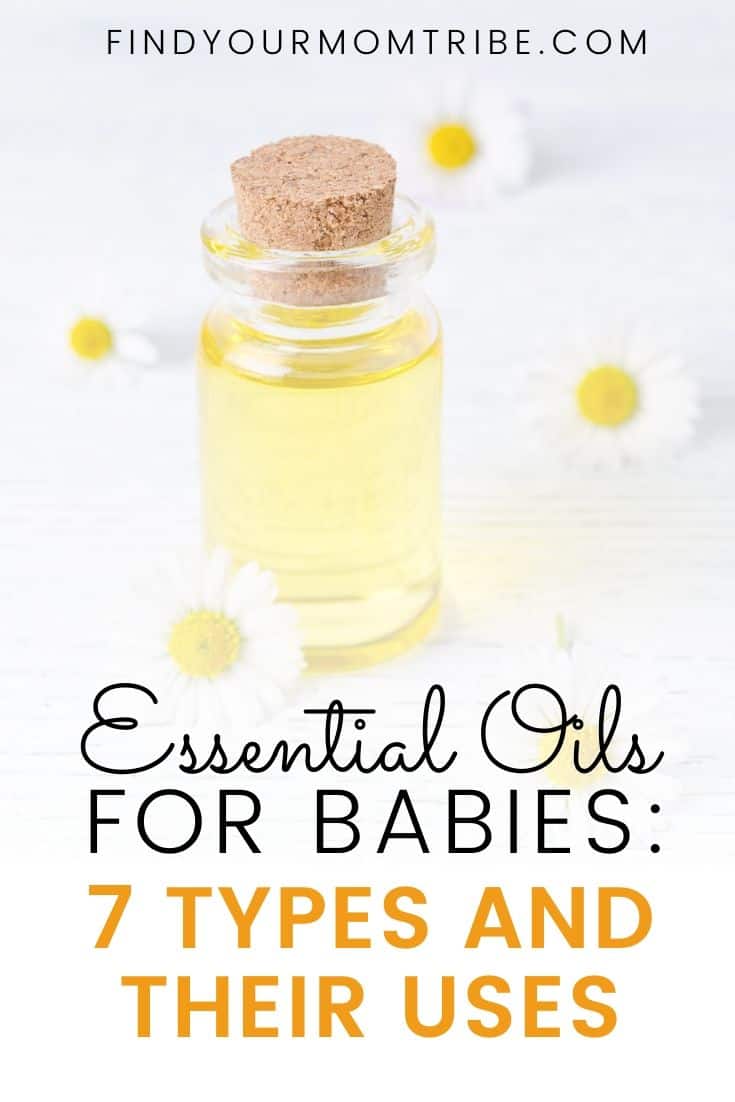
We love honesty! Find Your Mom Tribe is an Amazon Associate and we earn from qualifying purchases through affiliate links at no extra cost to you. Please see our full Amazon Affiliate disclosure for more information.



